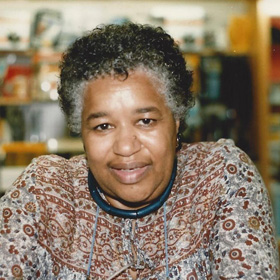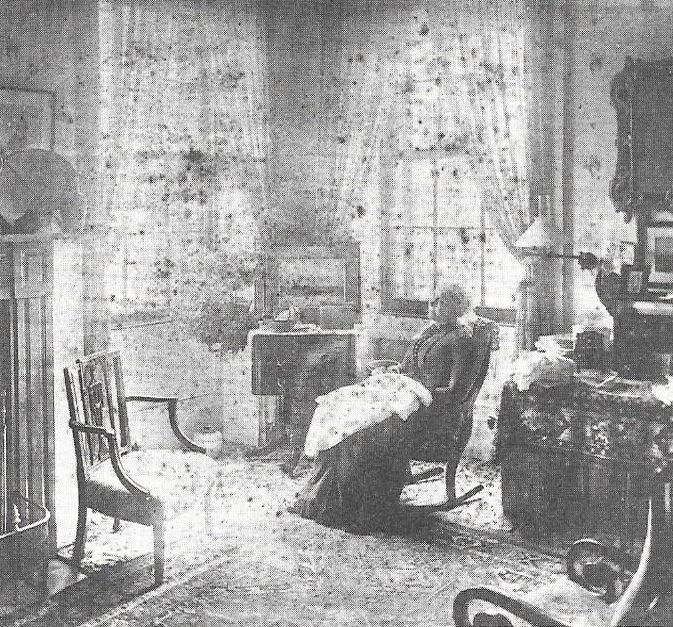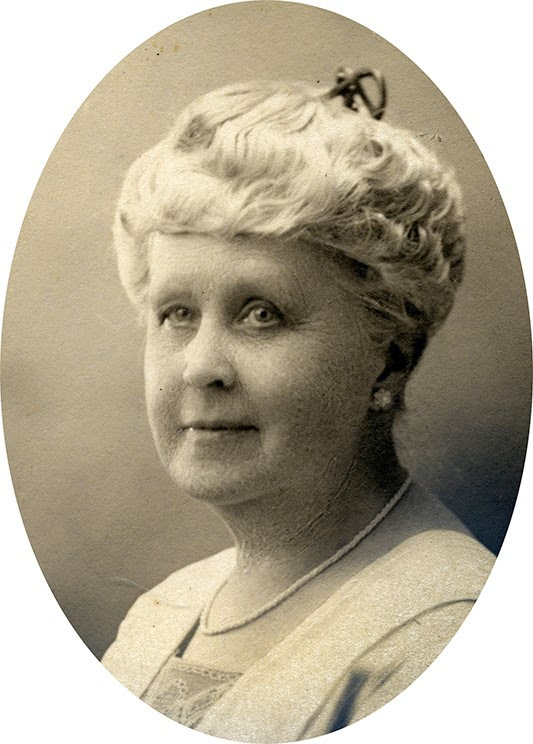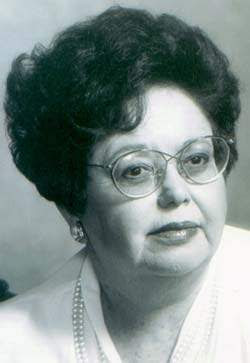New Bedford prepared physician and political agitator Marie Equi (1872-1952) for a lifetime of social justice advocacy. Marie’s Oregon medical practice and nationwide activism were influenced by her working class experiences while growing up in New Bedford. Oregon labor activist Julia Ruuttila remembered Marie as “a real friend of the have-nots of this world.”
New Bedford prepared physician and political agitator Marie Equi (1872-1952) for a lifetime of social justice advocacy. Born here on April 7, 1872, in the family home at 185 South Second Street, Marie Diana Equi was one of 11 children of John and Sarah Mullins Equi. Marie’s father John, anglicized from Giovanni, arrived in America at the age of 12 in 1853 from Italy and joined an older brother in New Bedford. A stonemason, John laid the foundation for St. Lawrence Martyr Church, the family’s church for all Catholic sacraments. Marie’s mother Sarah arrived in New Bedford with her mother at the age of nine in 1858 from Ireland, where both parents opposed British rule. In a Catholic ceremony, John and Sarah were married in April 1866. Sarah would have her 11 children in 16 years, and Marie would help with childcare and household chores. The Equis and their neighbors on South Second Street were working class families whose children were not protected from harsh realities. Marie lost three siblings and three cousins to diseases prevalent at the time, including croup and diphtheria. Her father invited striking mill workers for dinner, where Marie learned about working conditions in the factories. Later in life, Marie traced her sense of social justice back to her Italian father and Irish mother, each with roots against oppression.
At the age of eight, Marie and her family moved to a new home at 60 James Street in New Bedford’s West End, up from the waterfront and into a more diverse neighborhood that included the wealthy and the working class. Marie felt ostracized as both Italian, the city’s smallest immigrant population, and Irish, the city’s largest immigrant group. Marie’s biographer Michael Helquist points out that the Equis experienced anti-immigrant sentiment as both minority Italian and majority famine Irish. Nevertheless, at age 14, Marie graduated from Middle Street Grammar, an overcrowded school where she excelled in a progressive curriculum that focused on learning instead of traditional memorization and discipline. Marie next attended New Bedford High School, where teacher Mary E. Austin came to understand her as an excellent student despite behavior issues. Marie dropped out of New Bedford High School after her first year to work in a textile mill as one of nearly 2,000 teenage girls already in the city’s factories. It is unclear whether her dropping out was due to family circumstances, her struggles with self-control, or other factors. Over the next two years, Marie worked long hours at well below a living wage in deplorable conditions. Mill workers experienced debilitating noise and vibrations, oppressive heat and lint-filled air. Marie later reported breathing and lung problems after her workdays in New Bedford’s mills.
Confidant that she did not want to marry and rely on a husband’s income, Marie knew that she had to find her own way in the world. In 1889, with financial support from Bessie Bell Holcomb, a wealthy friend from New Bedford High School who attended Wellesley College, Marie enrolled at Northfield Seminary for Young Ladies, where she excelled. Unable to afford a second year at Northfield, Marie went to Tuscany to work on an uncle’s vineyards and olive groves. Meanwhile, Bessie dropped out of Wellesley College and moved to an Oregon homestead in 1891. By 1892, at age 20, Marie returned from Italy and joined Bessie on the Oregon homestead. Marie’s experiences in New Bedford had made her aware of the need for medical care for working class families. She had lived through her mother’s multiple pregnancies, her siblings’ deaths from infectious diseases, and her own respiratory problems from working in the textile mills. While Bessie taught at a prestigious private school and Marie studied for medical school entrance examinations, their relationship grew in closeness and intimacy. Both New Bedford women were courageous enough to relocate 3,000 miles away and live openly as lovers while each pursued a meaningful profession.
In 1897, Marie and Bessie left their Oregon homestead and moved to San Francisco. In 1899, ten years after dropping out of New Bedford High School, Marie enrolled at the College of Physicians and Surgeons in San Francisco as a first-year medical student. With women representing only 6% of U.S. physicians, Marie pushed through boundaries of class, gender and sexual orientation on her way to becoming a medical doctor. In 1903, after two transfers and a move to Portland with new companion and fellow medical student Mary Ellen Parker, Dr. Marie Equi graduated from the University of Oregon Medical Department. She would eventually set up a general practice in Portland with a focus on obstetrics, gynecology, and pediatrics. Biographer Michael Helquist notes that Marie’s New Bedford background facilitated her connection with Portland’s working class and immigrants. Throughout her practice, Marie served men as well, especially as she became more politically active.
By 1905, as Marie began to practice medicine, the social reform movement of Progressivism was taking hold in Oregon. Progressivism proposed a new social order that protected workers, women and children from labor abuses and that extended voting rights to women. In this climate of Progressivism, Marie began her work as political agitator. She joined the Oregon Equal Suffrage Association and attended the National American Women Suffrage Association’s first convention in the West held in Portland. In the spirit of Progressivism’s civic engagement, Marie volunteered on the Oregon relief mission to aid victims of the 1906 San Francisco earthquake. The only female doctor on the Oregon mission, Marie was put in charge of an obstetrics unit in a 300-bed San Francisco hospital. Countless Oregon and California newspapers detailed stories of Marie’s compassion and professionalism. The U.S. Army awarded her with a medal and citation for her relief work.
Later in 1906, Marie returned to New Bedford for six months to take care of her mother Sarah, who died in February 1907. Upon her return to Portland, Marie began her longest intimate relationship with wealthy heiress Harriet Speckart and eventually adopted an infant girl (as a single woman) with the help of a local judge.
Marie balanced her successful medical practice for women and children with an increasing activism for access to birth control information and other causes. Committed to women’s reproductive rights at a time when distribution of birth control pamphlets was illegal, Marie was arrested in 1916 with prominent birth control advocate Margaret Sanger for distributing Sanger’s birth control booklet, revised by Marie to update medical information. With risk to her professional standing, Marie believed that women should not be forced to bear children and she performed illegal safe abortions regardless of ability to pay. Politically, Marie also worked for women’s suffrage, public funding for the University of Oregon, prison reform and against capital punishment. Soon after her work with Sanger, Marie travelled to Seattle to treat injured members of the Industrial Workers of the World, “Wobblies” who had been hurt at the dock on their way to support striking mill workers. The Industrial Workers of the World were a radical union that believed in one union for all with all authority and management shifted to the workers. By this time, the unemployed were known as “her army” and striking workers were known as “her boys.”
Marie was radicalized after being clubbed by mounted police during her picketing with women cannery workers in Portland in 1913. Eighteen, including Marie, were arrested after this cannery protest turned violent. Marie received bruises from the police, while a paper reported that she stabbed at the police with a pin. Strong women were often called “mad,” and an ultimatum was given to Marie to leave Oregon or be committed. She refused to leave, showed additional bruises, and was never brought to trial. Outraged at the brutality, Marie moved from moderate social reformer to bold and fearless radical.
In 1914, Marie traveled back East on a predominantly political trip that included a stop in New Bedford. She was the official representative of Portland’s Unemployed League to the First National Conference on Unemployment in New York. Marie also did postgraduate work at Massachusetts General Hospital with Richard Cabot, pioneer in hospital social services. She spoke at a rally for the jobless at Boston Common. During her family visit to New Bedford, the New Bedford Standard called her “the little fighting doctor” who led a “one-woman fight . . . for the unemployed of Oregon and won.”
By the time World War I preparedness rallies reached Portland, Marie would call on local men to not enlist. In 1918, with increasing suppression of dissent, Marie was indicted on charges under the Sedition Act which included vowing allegiance to the red banner of industrial workers and attacking the character of U.S. soldiers. She was wiretapped, her friends were followed, and an informant was planted in her inner circle. At her trial, she denied the charges and objected to excessive surveillance. The prosecution presented evidence of her lesbianism and anger issues. Marie affirmed her patriotism and stated that she took issue, not with the government, but with corporate profiteering. Marie was found guilty and sentenced to three years in federal prison on December 31, 1918. She served 10 months at San Quentin California State Prison before she earned early release for good behavior. President Franklin Delano Roosevelt pardoned Marie on December 24, 1933. In 1934, she supported the effective West Coast’s Longshoremen Strike as well as the Maritime Strike. During a hospital stay in 1950, longshoremen sent her red roses. Later, Marie’s daughter Mary cared for her in Oregon as her health declined. On July 13, 1952, at the age of 80, Marie died in Portland and was buried there. Oregon labor activist Julia Ruuttila remembered Marie as “a real friend of the have-nots of this world.”
Visit biographer Michael Helquist’s website at http://www.michaelhelquist.com/ for
more information on Marie Equi and her times.
Ann O’Leary, Emily Bourne Research Fellow
| In 2020, we asked local students to tell the stories of civically engaged women from the Lighting the Way project through videos—including Marie Equi. |
Information from
-
Helquist, Michael. Marie Equi: Radical Politics and Outlaw Passions. Oregon State University Press, 2015.
-
United States, National Library of Medicine. “Dr. Marie Diana Equi.” Changing the Face of Medicine, 3 June 2015, https://cfmedicine.nlm.nih.gov/physicians/biography_103.html.
![[Marie Equi], 1910s, Photograph, Courtesy of Oregon Historical Society Photo of Dr. Marie Equi](https://historicwomensouthcoast.org/wp-content/uploads/2018/04/Marie-Equi-2-307x307.jpg)




